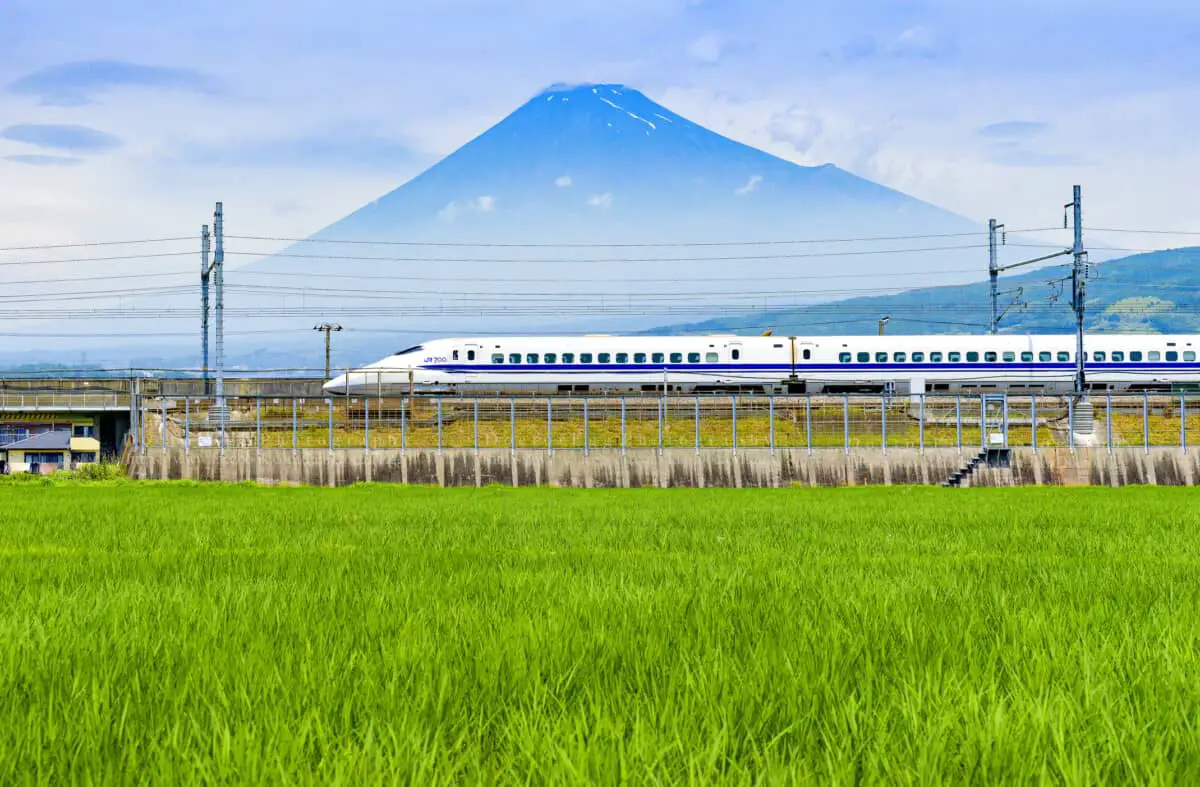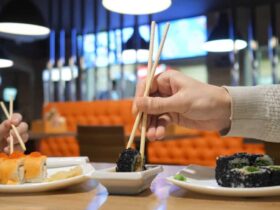Mount Fuji is one of the most recognizable mountains in the whole of Japan, making it very popular with tourists and Japanese nationals alike. But it still holds some interesting secrets that even very few locals are aware of.
In this article, we will explore the secrets of Mount Fuji that are unknown to many people that will help to shed light on the importance of this mountain, how it affects life for Japanese people, and its beauty and mystery.
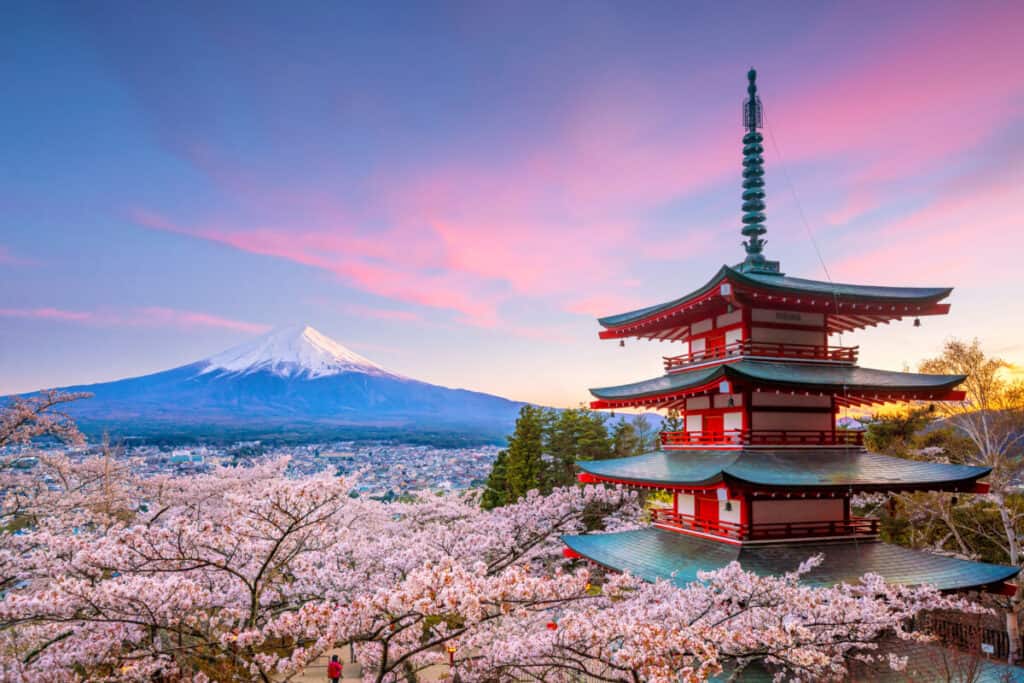
About Mount Fuji
Mount Fuji is Japan’s most famous mountain and is located on the border between the Shizuoka Prefecture and Yamanashi Prefecture. One of the reasons why the mountain is so famous is its height. Standing at 12388 feet, Mount Fuji is the tallest mountain in Japan.
The mountain attracts more than 300,000 visitors each year and in 2013 it was announced as a UNESCO world heritage site.
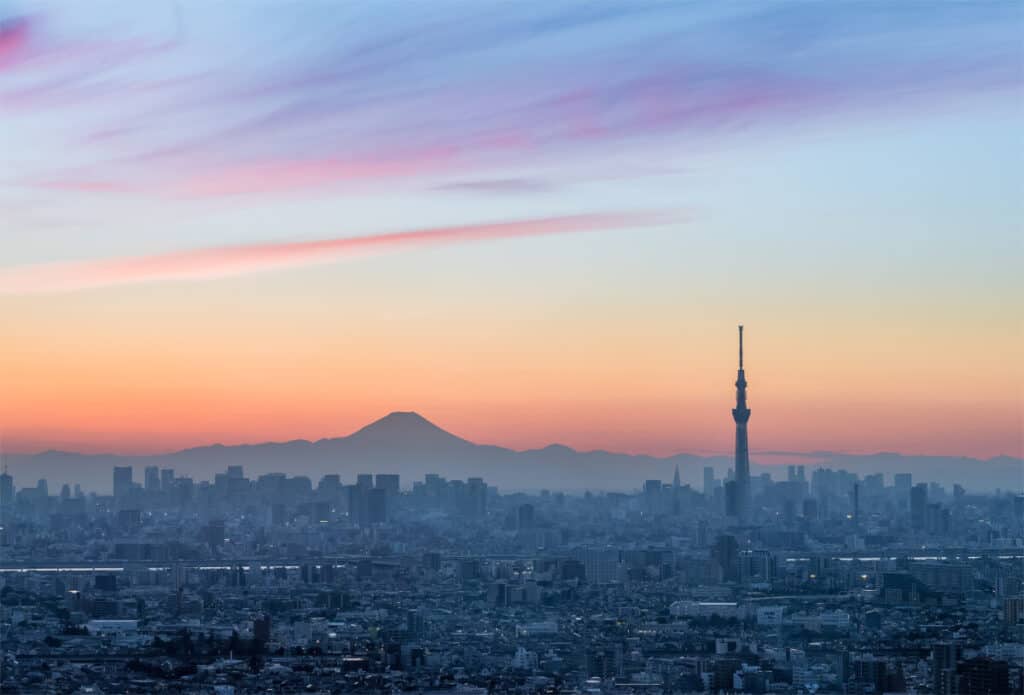
Mount Fuji is located on private property
One of the most surprising facts about Mount Fuji is that it is actually private property. The mountain belongs to the government from stages one through seven, however above 11023 feet, the mountain is privately owned by Fujisan Hongu Sengen Taisha, a Shrine.
This land in this shrine area is one of the 1300 shrines on land that is privately owned across Japan.
The shrine on Mount Fuji was dedicated to worshipping Asama no Okami in an attempt to reduce the volcanic eruptions. So, this land remains in private ownership today.
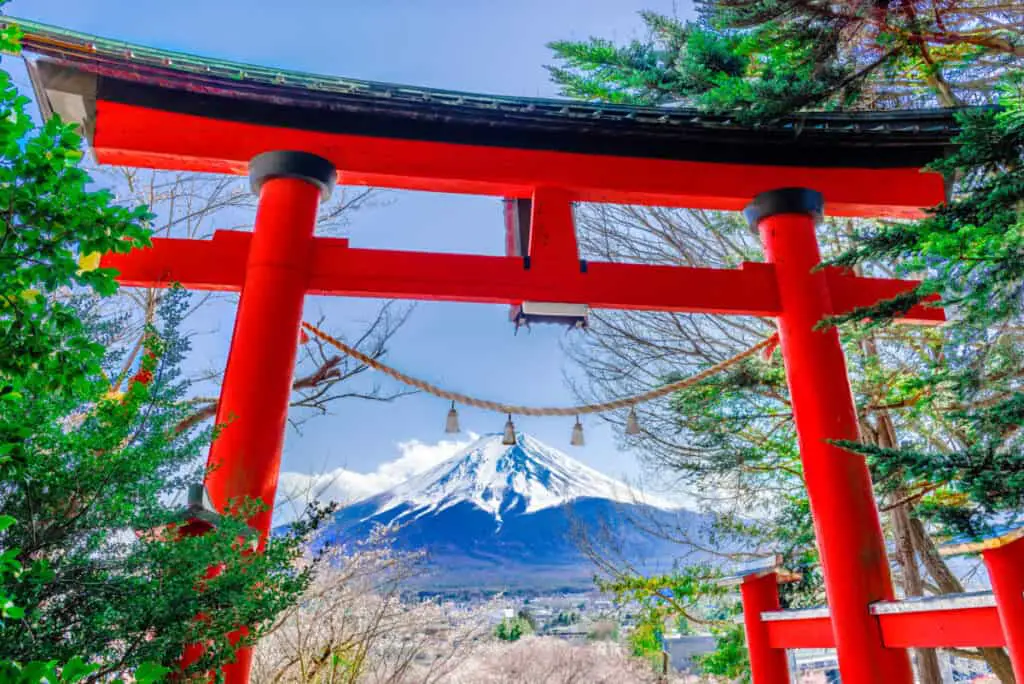
You can actually get married on Mount Fuji
Many people are drawn to Mount Fuji from all over the world to take in its beauty, but did you know that you can actually get married on the mountain?
The shine, which owns the top land of Mount Fuji, is actually open to anyone to use as a wedding hall. However, although this may seem like an idyllic situation there are a few requirements.
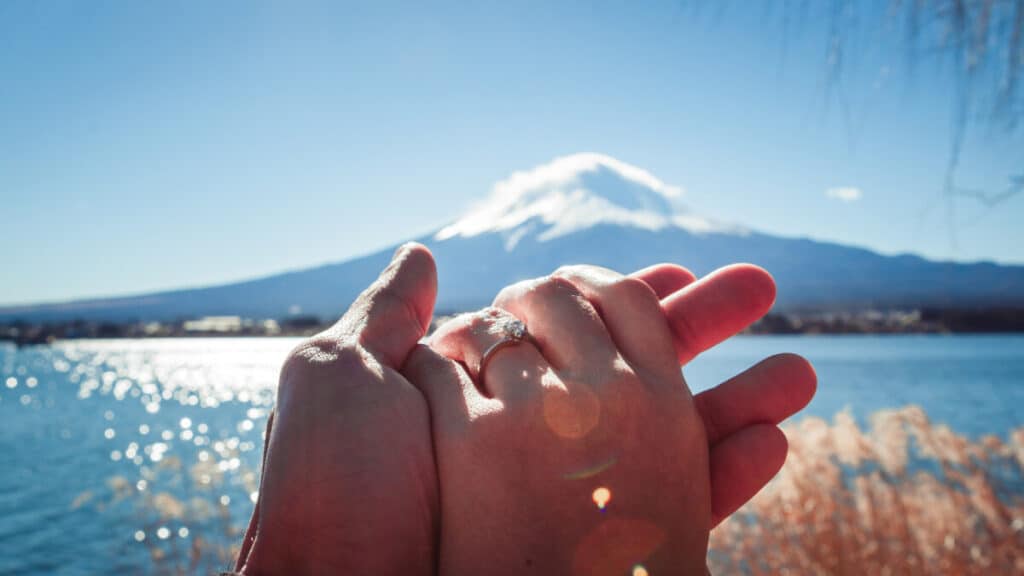
The worship hall is very small and can only accommodate ten people. You, and your guests, must also make your way up to the shrine at the top of the mountain before the ceremony.
In addition, you will need to submit your request at least three months in advance of your wedding and the fee is officially 100,000 yen (although 50,000 is expected as a gratuity).
During the climbing season every year, there are three wedding ceremonies on average.
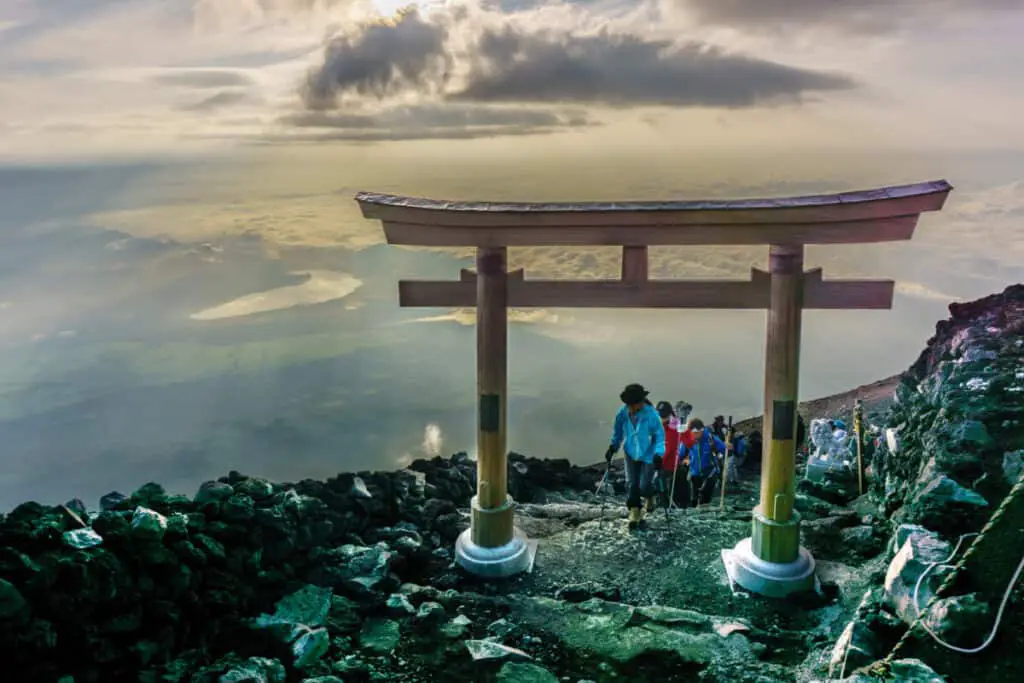
Although it requires a lot of effort a wedding atop Mount Fuji is a truly magical experience and the ceremony shrouds the happy couple in traditional music, blessed words, and fantastic views.
Where are the best spots to take pictures?
Some of Mount Fuji’s best-kept secrets are ones that both locals and tourists would love to know – the best picture spots. Although Mount Fuji is a sight to behold from any angle there are specific times of day, year, and locations that are better than others.
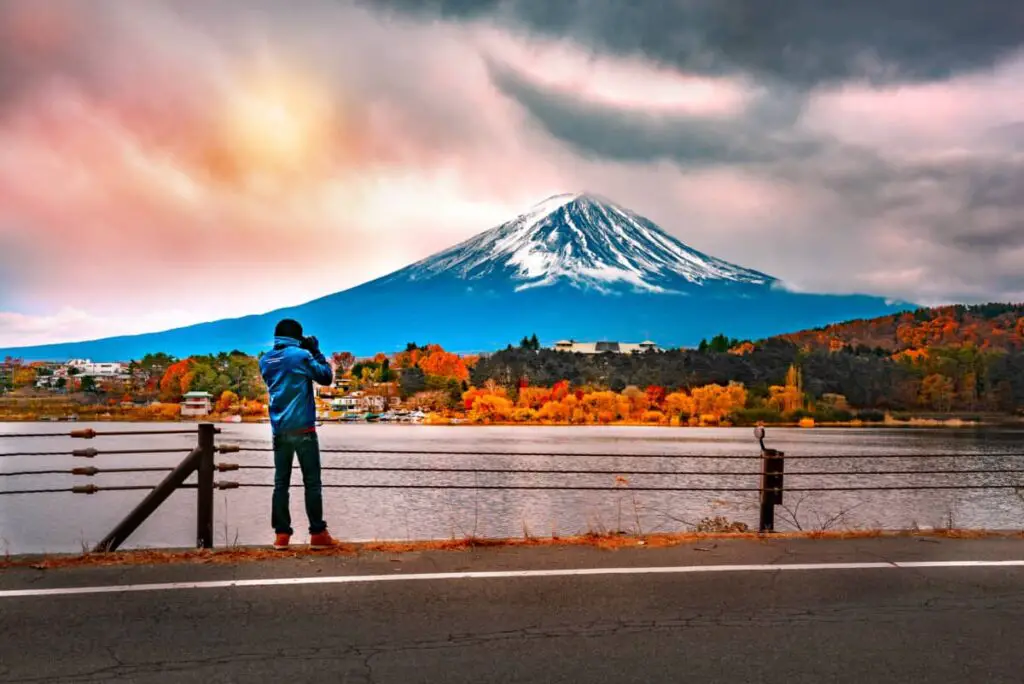
For swan pictures
In the winter months, between November and March every year, very large swans migrate to the bottom of Mount Fuji to Lake Yamanaka.
The swans’ incredible 3-foot wingspan can make for some incredible photographs when they are flying or showing off with Mount Fuji in the background.
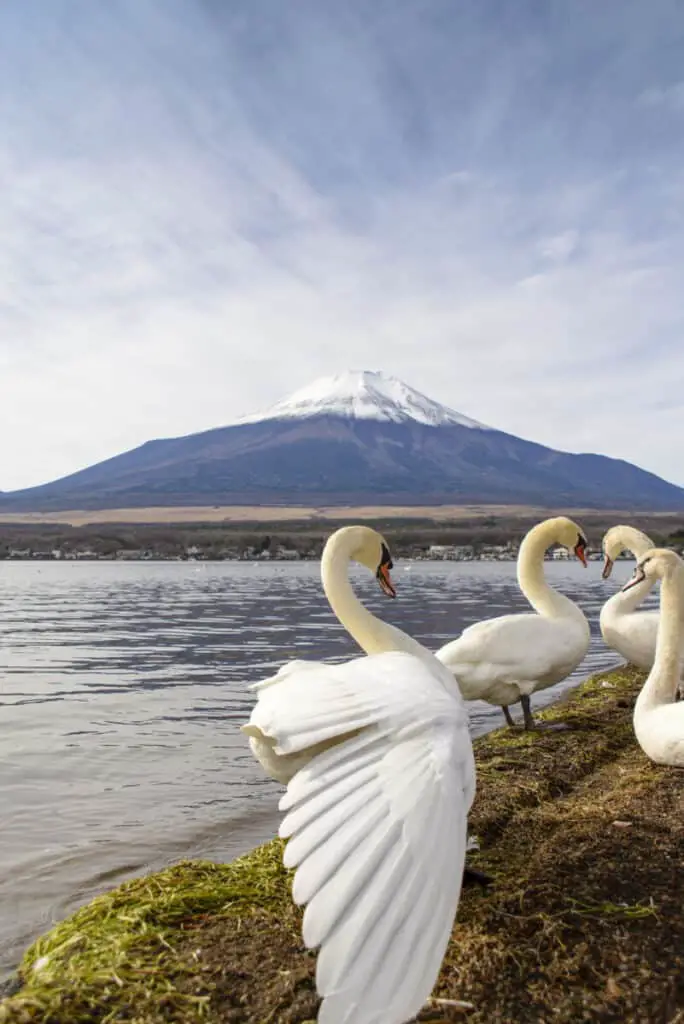
Although the lake is quite well-known for swan watching, as there is a hotel located on the lake, choosing a clear day to picture the scene will offer you some great pictures as you contrast the blue of the sky against the water and the white of the swans against the mountain top.
For cherry blossom pictures
If you head to Arakurayama Sengen Park nearby during the cherry blossom season then you will be able to take in some truly breathtaking views of Mount Fuji.
The park is filled with stunning cherry blossom trees in peak season and the contrast of the bright and warm cherry blossoms against the mountain backdrop make for fantastic photographs.
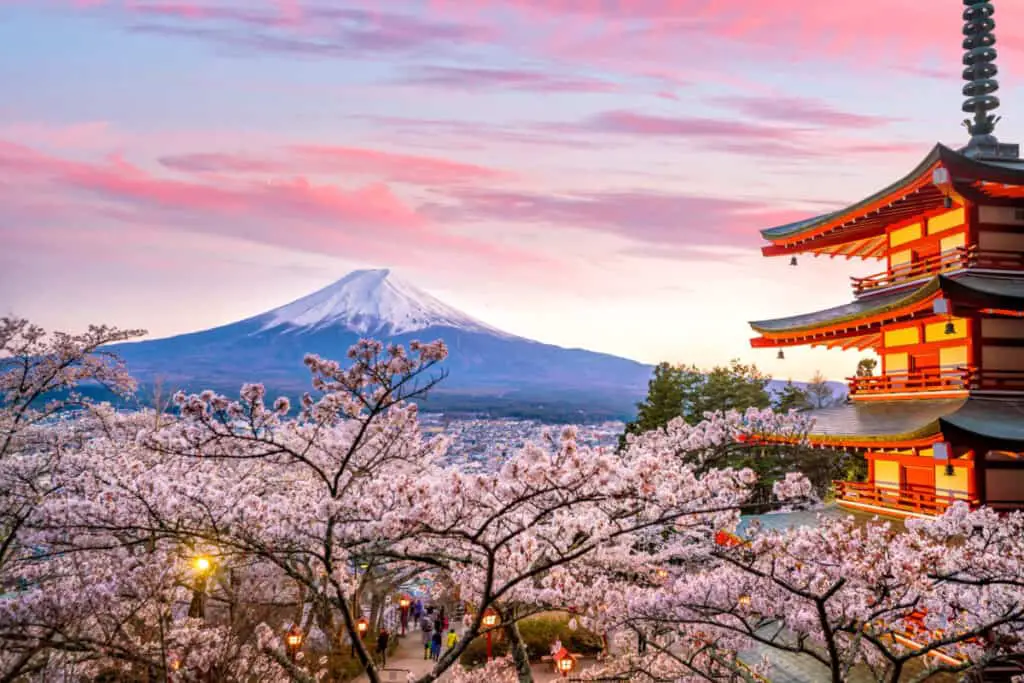
In addition, you can even recreate the famous view of the Chureito Pagoda, cherry blossoms, and Mount Fuji.
Mount Fuji reaches into the heavens
In climbing terms, the mountain has been divided into ten sections which are known as “stations”. The starting point, station one, is located at Murayamasengen Shrine’s torii.
The middle section is station five, and the top of the mountain is station ten. However, according to Fuji belief, the human world encompasses up to station five. Therefore, everything above station five actually belongs to the heavens.
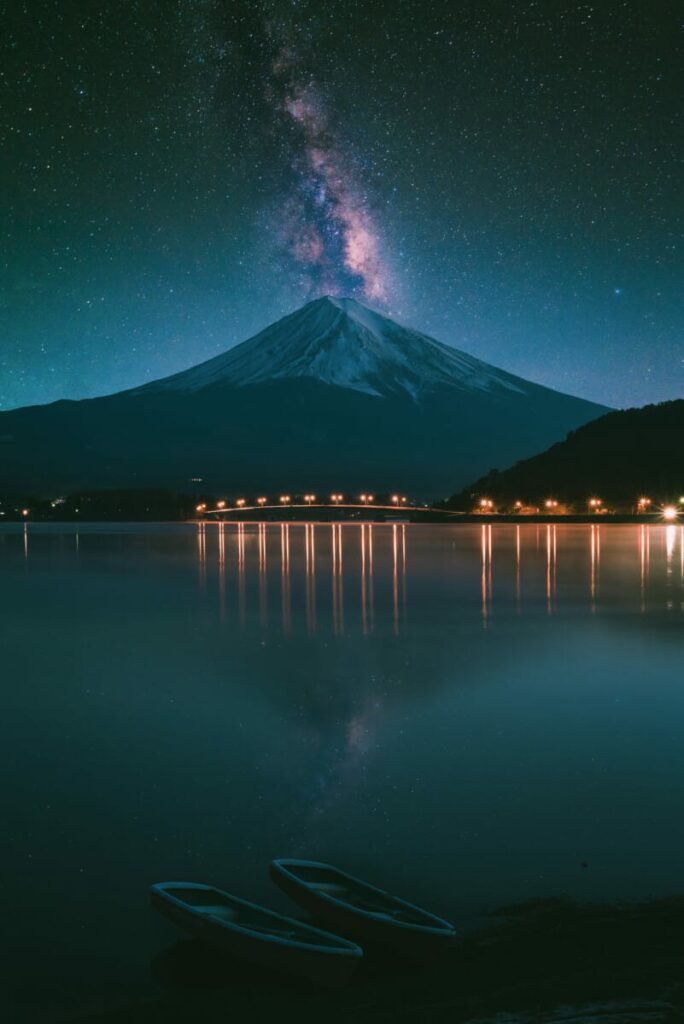
The reason why the word station is used is actually debated. “Station” is the translation of the Japanese word “go”, which is a word used for the volume of rice. Ten “go” is called a “sho” and it is believed that this volume of rice looks like a mountain, hence the association.
Does Mount Fuji have a front side and a back side?
Historically Mount Fuji has been divided in half with a front half (the southern base of the mountain) and the back half. What is known as “Front Fuji” is the part of the mountain that can be seen from Suruga Bay and “Back Fuji” is the part of the mountain visible from the five lakes.
The two sides of the mountain as seen as rivals regarding which is more beautiful. However, Mount Fuji is equally beautiful and distinct from any angle.
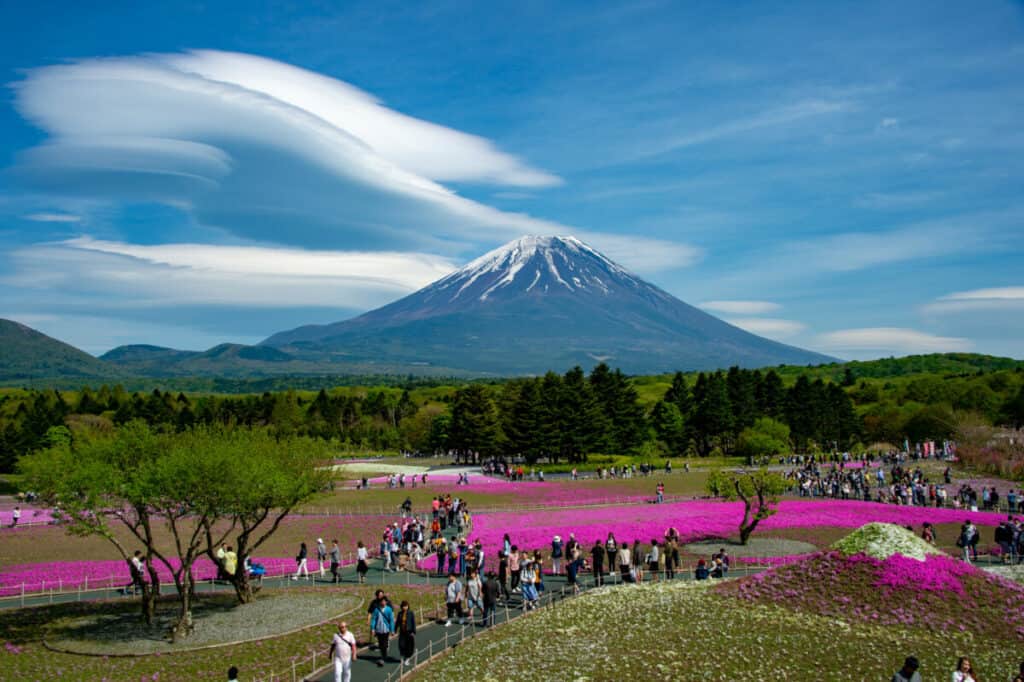
What is Upside-down Fuji?
This is a well-known image of Mount Fuji that is depicted on Japan’s 1000 yen currency. “Upside-down Fuji” actually refers to the reflection of Mount Fuji in the lakes below it. When looked at from the right angle you can see the mountain reflected and inverted at its base.
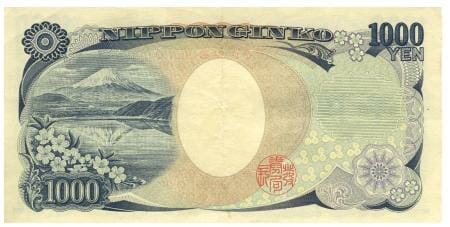
However, this view isn’t always available and you will need to wait for a sunny and still day to truly be able to appreciate it.
What is Red Fuji?
Red Fuji also refers to another fantastic view of the mountain. This time the view is of the mountain colored red in the evenings during the summer-fall months.
The beautiful red glow of the sky is reflected on the mountain, steeping it is a stunning red color that only lasts for a few moments.
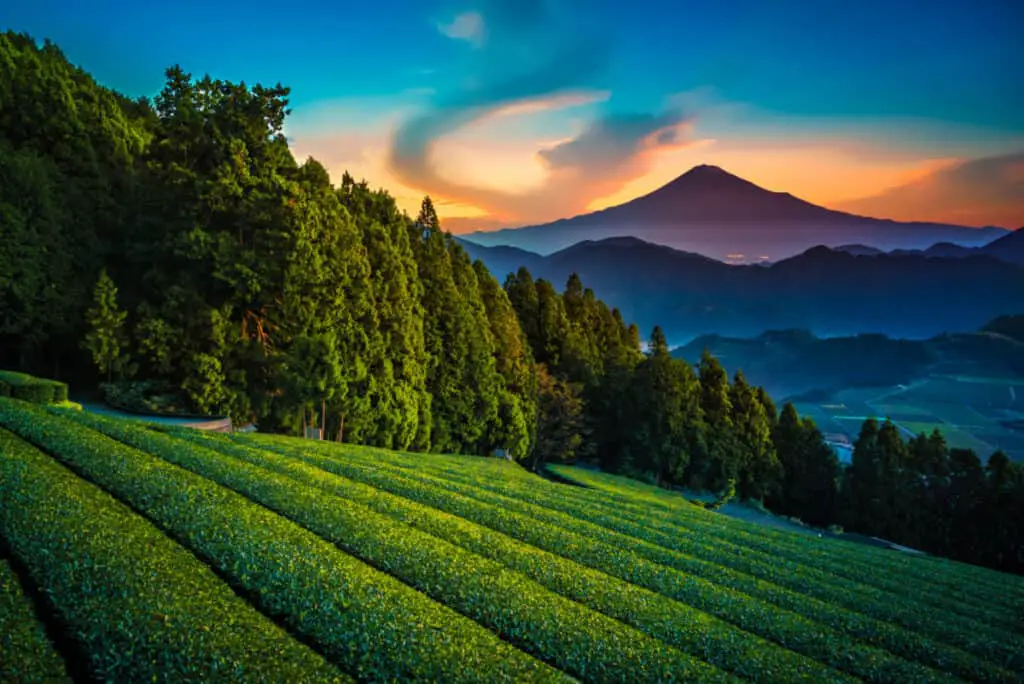
Much like Upside-down Fuji, Red Fuji (also called Aka Fuji) requires the perfect weather conditions. So, if you are lucky enough to be able to see Red Fuji, or better yet capture it on camera, then you are certainly one of the lucky ones.
Fuji forehead
Fuji forehead is a great example of the importance that the mountain holds in daily Japanese culture. This phenomenon refers to the widow’s peak in a woman’s hairline and it is more visible when the hair is tied up.
The “Fuji forehead” is depicted in many Japanese woodblock prints that date back to the Edo period. However, even today this feature is still considered to be desirable.
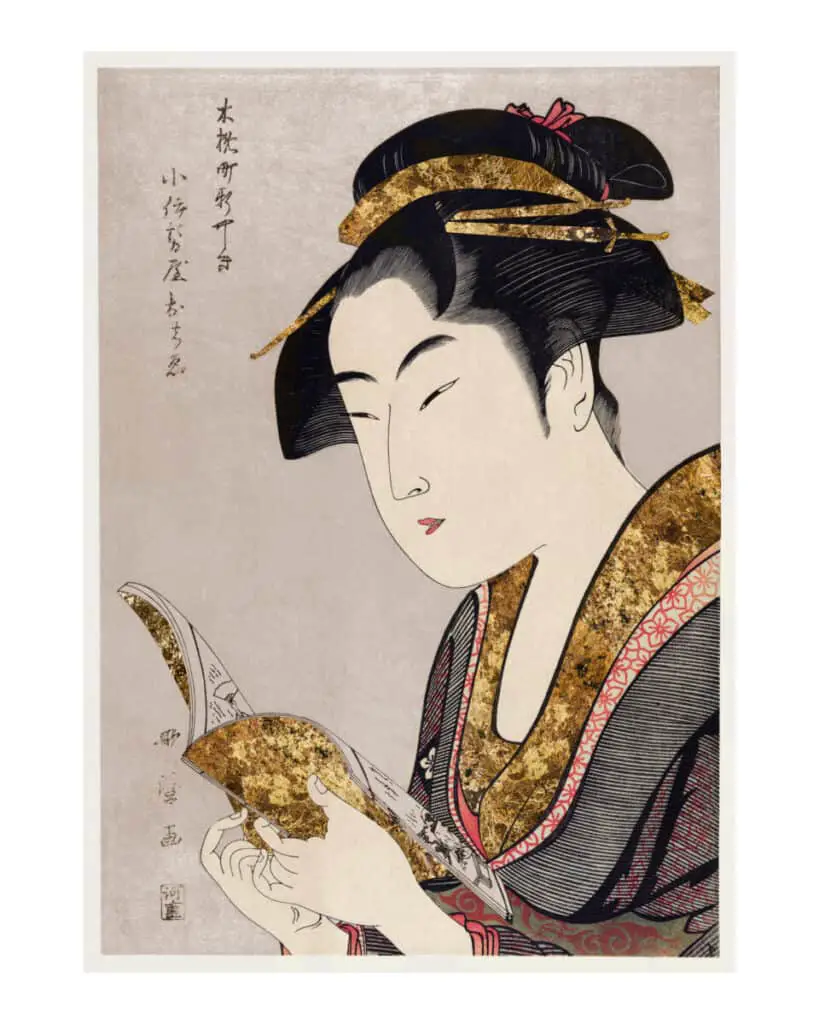
Mount Fuji is actually a combination of four different mountains
Perhaps the most interesting fact that many people do not realize is that Mount Fuji is not one but four mountains. This is because Mount Fuji was created in four stages according to past volcanic activity.
The first was Mount Senkomitake which was created hundreds of thousands of years ago.
Then the next stage was called Mount Komitake before the third stage, Mount Kofuji (literally translating to “old Fuji”) was created thanks to a nearby eruption between 10,000 and 100,000 years ago.
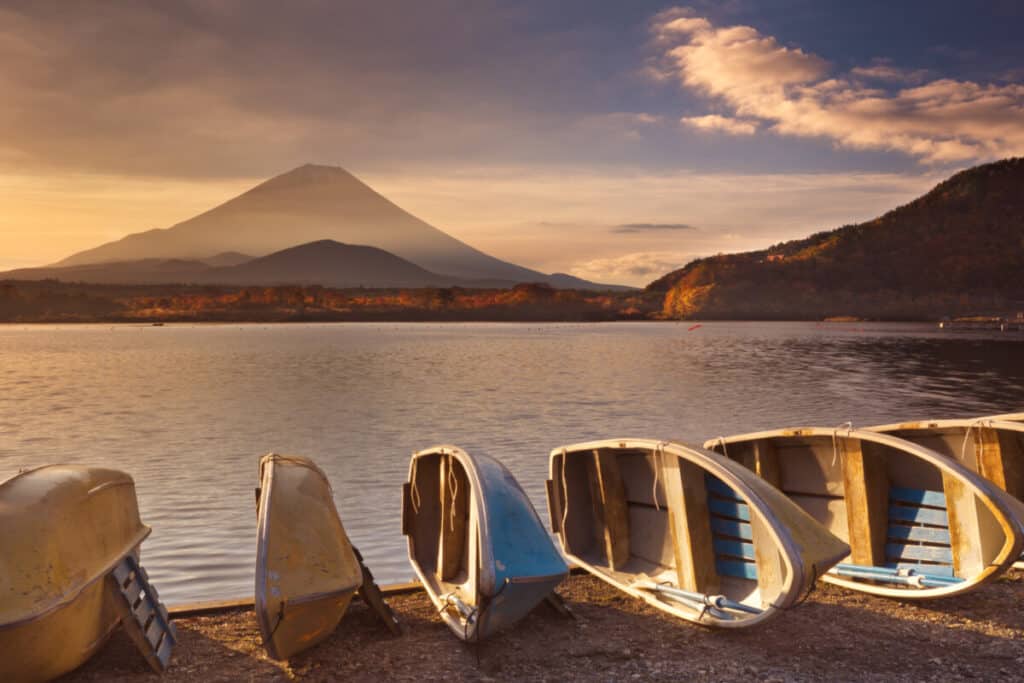
These three mountains were then combined together thanks to multiple eruptions which covered them in a blanket, unifying them to create Mount Fuji as it is known today. This phenomenon occurred roughly 10,000 years ago.
Mount Fuji is sometimes referred to as Mount Shinfuji, which means “new fuji” in reference to the “old fuji” mountain that came before it.
The legend of immortality
Mount Fuji is riddled with myths and legends but perhaps one of the most intriguing is that of immortality. In fact the Japanese characters for the words Mount Fuji can be written as “no death” and “mountain”, referring to the legend.
A legend from the Heian period of the bamboo cutter who gained immortality thanks to Mount Fuji remains at the heart of the myth.
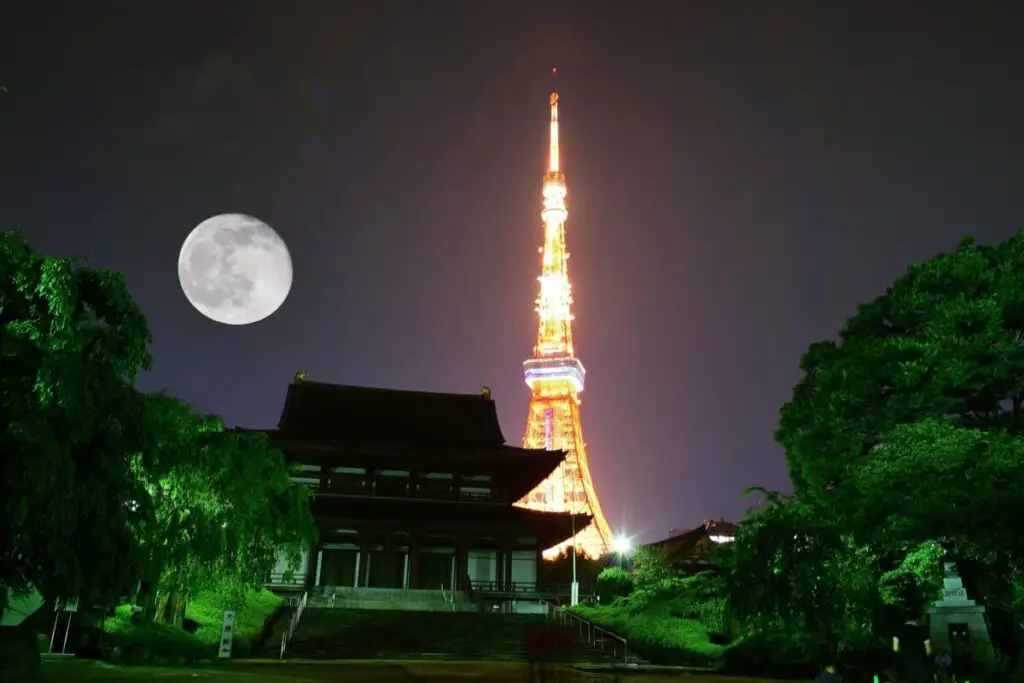
The bamboo cutter is said to have found and raised a child from a stalk of bamboo who turned out to be a princess of the moon.
The woman was impossibly beautiful and attracted the attention of the Emperor who was so distraught when she returned home that he climbed to the top of Mount Fuji and destroyed the immortality potion that she had given him, giving the mountain immortal powers.

